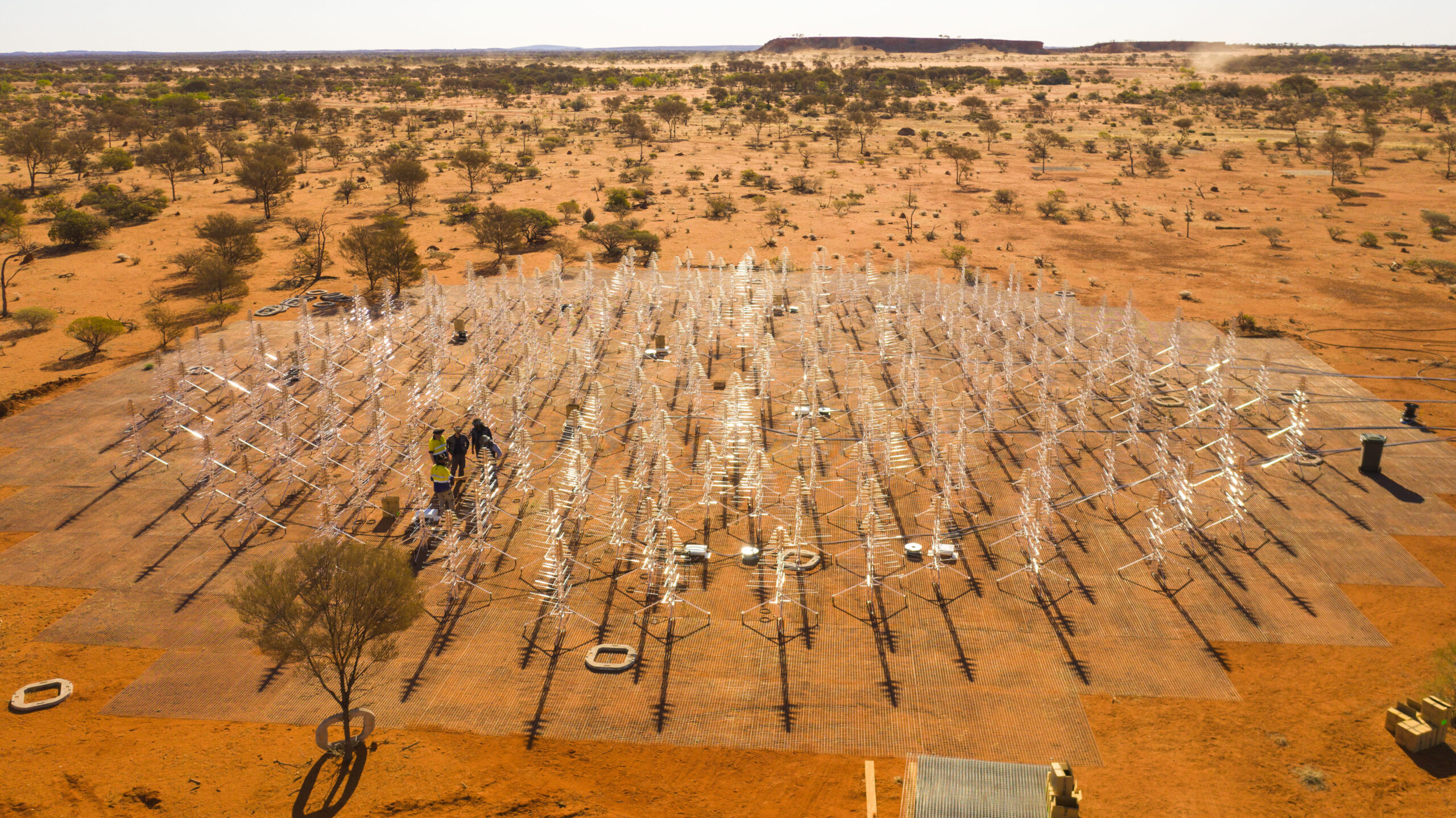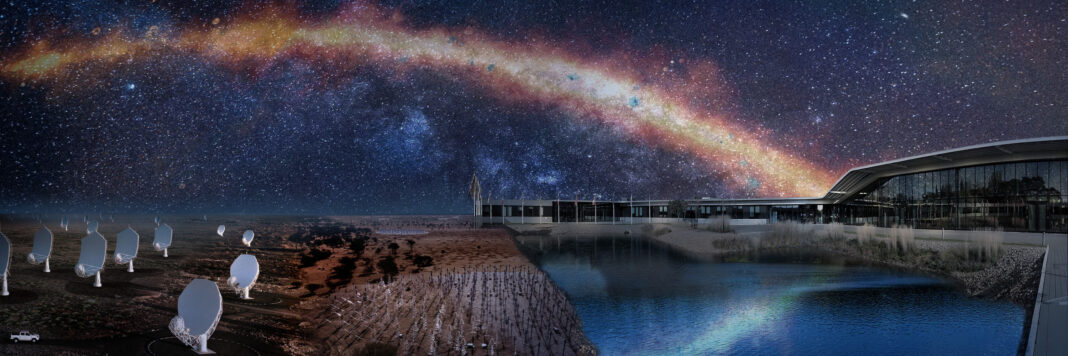The SKA (Square Kilometre Array) Radio Telescope Observatory — planned to be the largest radio astronomy facility on the planet — has begun construction after 30 years in the planning stages. This mammoth project comprises two radio telescopes, one in South Africa and the other in Australia. It would be a global observatory operating two telescopes across three continents.
The SKAO is a next-generation radio astronomy-driven Big Data facility with the aim to unlock and go deeper into the understanding of the universe and the laws of fundamental physics. Building these enormous radio facilities is just phase one of the grand plan. By using the SKOA, scientists hope to learn more about early star formation. How can radio telescopes help them in their studies?
The SKA Radio Telescopes
Conceived at the beginning of the 2000’s millennium, it’s taken the Australian and South African governments a long journey of cooperation to reach this point. The SKA Radio Telescope Observatory will likely be operational in a few years. Some of the scientific operators will still need several years to be ready. However, once completed, the array is poised to give astronomers insight into the universe more significantly than any other radio telescope facility before it.
The SKAO will be one global observatory operating two telescopes across three continents. Currently, 16 countries from all over the world take part in the project. Similar to how optical telescopes collect and enhance light to get detailed images, radio telescopes improve radio waves to allow astronomers to analyze them. Radio waves can provide scientists with much more information about stars, galaxies and other astronomical objects than observed using only visual data.
Specifications and Applications
The SKA Radio Telescope Observatory will integrate two main facilities — the Murchison Radio Observatory in Western Australia and the Karoo Astronomy Reserve in South Africa. Murchison Radio Observatory will be home to the SKA1-LOW telescope. This telescope is designed to observe radio waves in the range of 50-350MHz.
Its primary purpose is to observe the Epoch of Reionization — the period in cosmic history when the stars first formed. To accomplish this, SKA1-LOW will consist of phased dipole antenna stations separated by 65km. This is the optimal configuration for observing low-frequency radio waves.
The Karoo Astronomy Reserve will be home to the SKA1-MID. The design of this telescope allows it to support radio receivers that can capture frequencies of up to 20 GHz. To achieve this, SKA1-MID will utilize 197 dish antennas spread over a 100 km range.
The wide range of frequencies accessible with this telescope will address various fundamental scientific areas — including the reconstruction of gravitational waves using high-precision pulsar timing. The range of the SKA1-MID is so great that it can also look for traces of life on other planets.

Challenges and Timeline
Both telescope’s construction began on December 5 in 2022 The first building project is Array Assembly 0.5, made of six SKA-LOW antenna stations and four SKA-MID dishes. Construction is set to finish by early 2024.
Once work on Array Assembly 0.5 is completed, the raising of Array Assembly 1 will begin. It will comprise 18 SKA-LOW stations and eight SKA-MID dishes. It will be completed by 2026. Early 2027 will see Array Assembly 2 finished, which contains 64 SKA-LOW stations and 64 SKA-MID dishes.
All the installations are expected to be ready — and the facility for scientific operations — by 2028–2029. However, the SKA Radio Telescope Observatory faces many challenges. One of the primary drawbacks of radio telescopes is the possibility of radio interference. It makes images unclear and limits the number of observable radio waves.
Natural factors generate radio interference, but the most significant sources are aircraft systems and satellites. Satellites pose a complex problem for radio telescopes, as the waves they broadcast create a layer of interference that gets thicker as companies add more.
In particular, this interference will significantly affect SKA-MID since its range of observation covers up to 20 GHz — the same or close to the frequency most satellites operate on.
However, the SKA observatory members have stated they are more than up to the challenge.
Both telescopes were built in locations designated as national radio-quiet zones. These sites will allow the telescopes to maximize the range of observations while considering radio interference from satellites and other sources. Furthermore, SKA-LOW and SKA-MID ensure there is little to no radio interference generated from the telescopes.
Construction of the SKA Radio Telescope Observatory continues, and the future of radio astronomy looks bright. The largest and most advanced radio observatory is poised to give scientists a greater understanding of the universe and its workings than ever before.
References.
Scaife, A. M. M. (2020). Big telescope, big data: towards exascale with the Square Kilometre Array. Philosophical Transactions of the Royal Society A, 378(2166), 20190060. https://doi.org/10.1098/rsta.2019.0060
Explore | SKAO. (n.d.). https://www.skao.int/en
Newton, E. (2023, March 28). Making Up the Universe: What Are Cosmic Objects? Revolutionized. https://revolutionized.com/cosmic-objects/
Cooper, K. (2023). SKA Observatory (SKAO): A guide to the soon-to-be largest radio telescopes in the world. Space.com. https://www.space.com/square-kilometre-array-observatory-skao#section-when-will-the-ska-telescopes-become-operational
Foust, J. (2023). Radio telescope faces “extremely concerning” threat from satellite constellations. SpaceNews. https://spacenews.com/radio-telescope-faces-extremely-concerning-threat-from-satellite-constellations/
Images credit: SKAO. https://www.skao.int/en/media
